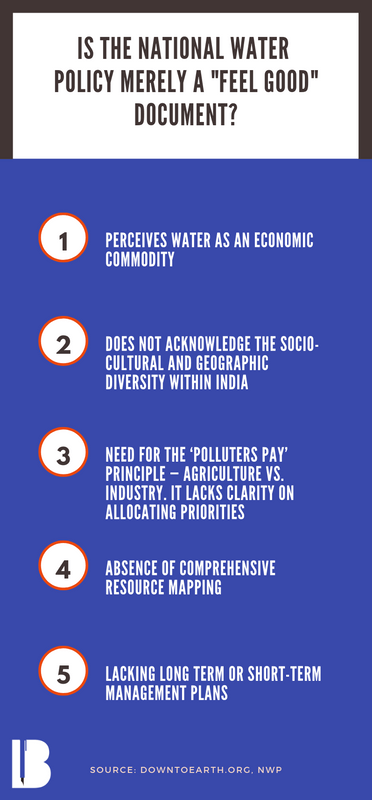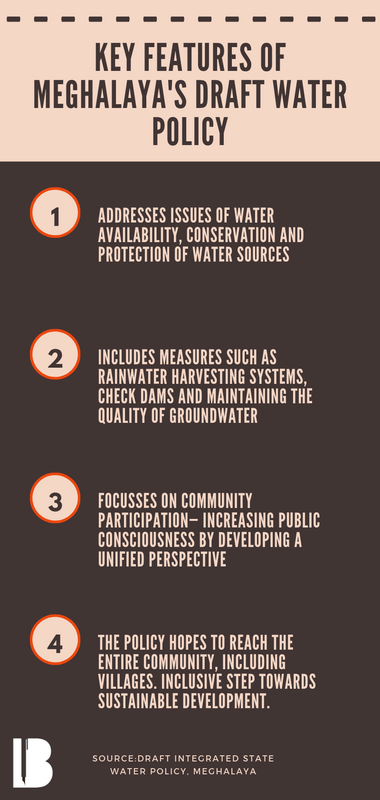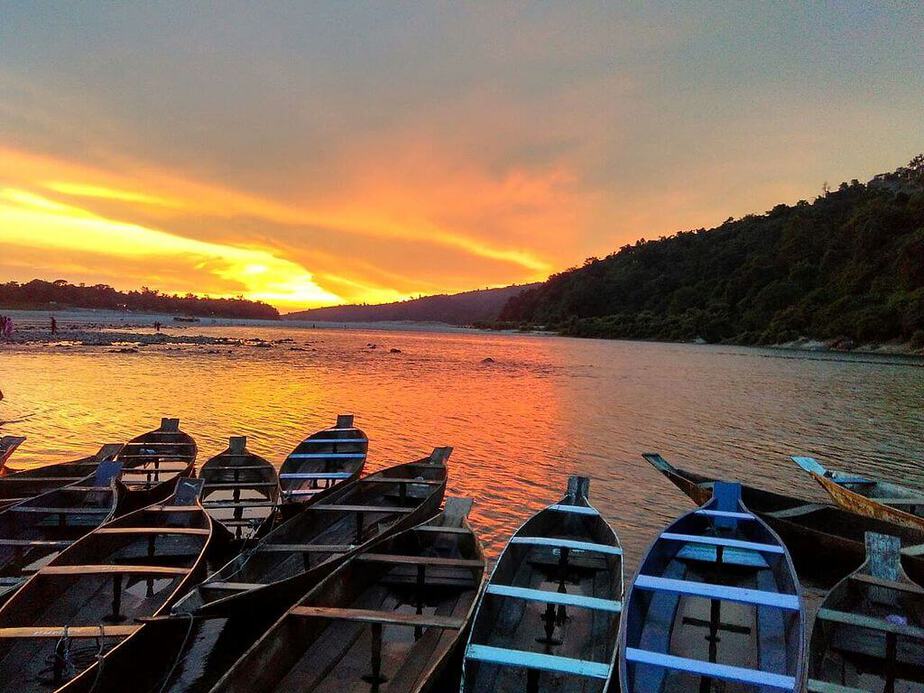Written by Tarini Monga
This year, Assam, Bihar and most recently, Karnataka are battling floods. Jharkhand, on the other hand, is staring at a drought with 40% rainfall deficit. For a country where the availability and extent of water resources for each state differs, along with the relationship that they share with water, water resource management becomes complicated. This kind of diversity calls for a more region-specific need for water management. Amidst the country’s struggle with too much, or too little water, Meghalaya showed an example of such contextual water management, as it became the first state to approve a draft water policy this July.
The Cabinet after detailed a deliberation approved the Meghalaya State Water Policy 2019. It is historic for #Meghalaya as we have become the first State in the country to have a State water policy.@PMOIndia @narendramodi @gssjodhpur pic.twitter.com/KRsdx8NyEv
— Conrad Sangma (@SangmaConrad) July 12, 2019
Centralised efforts for water resource management made their way through the National Water Policy (NWP), 2002 (revised in 2012). But, the distance that the policy had from reality on the ground, made it seem like just a “feel good” document. By perceiving water as an ‘economic’ resource, the policy by-passed principles of social justice and equity. Further, it did not take into account the ‘polluter pays’ principle for industrial users. The policy did not entirely accommodate ecological and developmental needs of the country and remained silent on allocation priorities, making it possible for industries to walk away with water supply from some very water-scarce basins. Moreover, in the absence of a comprehensive resource map, the NWP failed to mention any long-term or short-term management plans for the efficient use of water.

This is not to say that NWP was all bad. To its credit, the Policy brought in progressive concepts of water footprints, water auditing, maintaining minimum flows in rivers etc., but it could not contextualise water management to the level of the state, by virtue of being a central policy. With its one-size-fits-all approach, the National Water Policy could not navigate through the country’s social, economic and geographical diversity. It instead, called out to the states, stating that “to achieve the desired objectives, State Water Policy backed with an operational action plan shall be formulated in a time-bound manner, in say, two years.” But with the states not being vigilant to sustainable development and resource management, and the centre constantly reiterating on water being a state subject and responsibility, state water policies have barely come to fruition.
Until now.
While Meghalaya is better known as the ‘wettest’ place on Earth, it is highly susceptible to flash floods, problems of retention, and water shortage, especially at a time when the development needs of the state are on a rise. In this light, the draft Water Policy was shaped to suit its unique water problems, addressing the issues of water availability, conservation and protection of sources.
Their policy includes measures like rainwater harvesting systems, check dams to tap rainwater, controlling the inappropriate use of groundwater and keeping a check on the quality of groundwater. For all its measures of management and use of resources lies an intrinsic factor—community participation. This is a rather unique and important section of their mandate: it addresses the need for increasing public consciousness and a unified perspective on the efficient use of water resources. The Integrated State Water Policy of Meghalaya not only gives importance to community-driven development but also hopes to reach the villages with the policy and successfully utilise the untapped source of groundwater in the state. Through this policy, Meghalaya tries to address today’s urgent need for sustainable development, while localising the efforts.

We know Meghalaya to be the first to implement its own Water Policy, but we are beginning to see initiatives amongst other states. For instance, in July 2019 the Haryana government took responsibility of management at the agricultural level. This included encouraging the use of less water-intensive crops and rainwater harvesting mechanisms. Not only did the new crops help in conserving water resources but also saved farmers from incurring huge losses. Gradually, we are witnessing certain instances of responsibility towards the ecological needs of our time, while keeping the local problems, solutions and people at the Centre. Such initiatives are the need of the hour to keep up with the speed of environmental degradation we are faced with.
The approach taken by Meghalaya will hopefully create ripple effects in other states in the face of the worrying water crisis we are confronted with. In light of the critical water shortage in Southern regions like Chennai, the need to adopt State Water Policies is urgent. Community participation and proportional responsibility are key to any policy that aims for sustainable development today.






